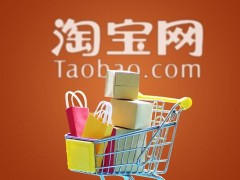How do individuals do cross-border e-commerce? How do cross-border e-commerce do it?
个人零起步做跨境出口电商前期准备工作:
1.确定跨境电商方向
因为跨境电商又分为出口电商和进口电商,所以我们要先明确自己的销售方向,看是要做出口还是进口,然后才是选择平台。
2.人群分析、跨境平台分析及选择
确定我们想要销售的国家,分析该国家有哪些特点,比如说:文化习俗、生活爱好、地理条件、气候状况以及该国家的历史,分析该国家的人群特点,找到该国家人群的需求品是什么。
选择跨境电商平台,看一下哪一个平台更适合我们销售,同时还需要了解平台上的各种规则和制度,避免之后出现违规现象。
目前市面上跨境电商平台有很多(可参阅文章:跨境电商平台汇总),每个平台都有自己的特色和优劣势,所以卖家要先结合自身实际情况选择适合的平台。
熟悉规则的深浅很大程度决定你是否可以运营好这个平台,就如同玩游戏熟悉游戏规则的道理一样。每个平台基本上都有卖家中心,建议多到这些卖家中心进行学习
比如说eBay大学,速卖通大学,如果在公司的话,可以有老手的指导,然后可以去各种外贸论坛,网站学习,最后用学习的各种理论,通过后台的具体运营实践,慢慢掌握。
3.选择产品
选择产品主要有以下几种方法,一是用平台的前台搜索关键词,结合相关的工具,能够看出这类产品总的上架个数,竞争情况,销量如何,从而确定自己的产品方向;
二是通过浏览一些外国购物网站
了解网站的热销品,可以为你的选品提供参考;
三是通过国外的社交媒体,像facebook,Twitter、Tumblr等出现的热度比较大的产品;
四是通过搜索平台的大卖家,比如你想做某个产品的品类,通过关键词搜索到一个榜样店铺进行研究分析。
而且通过研究榜样卖家的买家页面我们可以了解到爆款产品的标题,关键词,市场定位,市场活跃度等各方面的有效信息。
亚马逊注册条件:
亚马逊平台一张支持美元的信用卡即可注册,wish平台需要申请人在其他电商平台的店铺URL地址才可以;速卖通平台需要的材料较多,包括身份证、公司营业执照、税务登记证、银行开户及地址证明材料。
当然既然是卖货,更多卖家关心的是出单周期。亚马逊一般是7-15天出单,新手卖家从上传产品到出单一两个星期就可以做到,尤其是在第四季度折扣季的时候,只要做好线上优化,出单速度会更快。
从这方面也能看出亚马逊平台的流量是非常大的,流量大才能保证小卖家也有销量。
跨境电商现状:
现在跨境电商就像是一个面向全世界的淘宝一样,市场容量大,竞争相对少,让这个行业的风头一时无两。再加上近年来跨境电商体验店的迅速发展,取得了不错的成绩
而且中国人的消费水平逐渐提升以及需求的增加,跨境电商在国内特别是大中城市都有着很大的消费市场。总体上可以概况为以下几点;
1、跨境电商需要面对的是更广阔的消费群体,而且国内外的消费习惯,对商品的喜好,价格的定制都是有不一样的区别。
2、跨境电商意味着,我们对商品的要求更加严格,严格的不光是质量上标准,更多的时候也是对我们自身能力的考验。
Professional answer
Preliminary preparations for individuals to start cross-border export e-commerce:
1. Determine the direction of cross-border e-commerce
Because cross-border e-commerce is divided into export e-commerce and import e-commerce, we must first clarify our sales direction, see whether to do export or import, and then choose the platform.
2. Crowd analysis, cross-border platform analysis and selection
Determine the country we want to sell in, analyze the characteristics of the country, such as: cultural customs, living hobbies, geographical conditions, climate conditions and the history of the country, analyze the characteristics of the people in the country, and find out what the people in the country need.
Choose a cross-border e-commerce platform and see which platform is more suitable for our sales. At the same time, we also need to understand the various rules and regulations on the platform to avoid violations later.
There are many cross-border e-commerce platforms on the market (see the article: Summary of cross-border e-commerce platforms), each platform has its own characteristics and advantages and disadvantages, so sellers must first choose a suitable platform based on their actual situation.
How familiar you are with the rules largely determines whether you can operate the platform well, just like the principle of being familiar with the rules of a game. Each platform basically has a seller center. It is recommended to go to these seller centers for learning.
For example, eBay University and AliExpress University. If you are in a company, you can have the guidance of veterans, and then go to various foreign trade forums and websites to learn. Finally, use the various theories you have learned through specific operational practices in the background to slowly master them.
3. Select products
There are several main ways to select products. First, use the platform's front-end search keywords, combined with relevant tools, to see the total number of such products on the shelves, the competition situation, and the sales volume, so as to determine your own product direction;
Second, by browsing some foreign shopping websites
Understanding the hot-selling products on the website can provide a reference for your product selection;
Third, through foreign social media, such as Facebook, Twitter, Tumblr, etc., there are relatively popular products;
Fourth, by searching for large sellers on the platform, for example, if you want to do a certain product category, search for a model store through keywords for research and analysis.
And by studying the buyer's page of the model seller, we can learn about the title, keywords, market positioning, market activity and other effective information of the popular products.
Amazon registration conditions:
On the Amazon platform, you can register with a credit card that supports US dollars. The wish platform requires the applicant to have the URL address of the store on other e-commerce platforms; the AliExpress platform requires more materials, including ID card, company business license, tax registration certificate, bank account opening and address proof materials.
Of course, since it is selling goods, more sellers are concerned about the order cycle. Amazon generally takes 7-15 days to issue orders. Novice sellers can do it in one or two weeks from uploading products to issuing orders, especially during the discount season in the fourth quarter. As long as online optimization is done well, the order speed will be faster.
From this aspect, it can also be seen that the traffic of the Amazon platform is very large. Large traffic can ensure that small sellers can also have sales.
Current situation of cross-border e-commerce:
Now cross-border e-commerce is like a Taobao facing the world. The market capacity is large and the competition is relatively small, making this industry unparalleled. In addition, the rapid development of cross-border e-commerce experience stores in recent years has achieved good results.
As the consumption level of Chinese people gradually improves and the demand increases, cross-border e-commerce has a large consumer market in China, especially in large and medium-sized cities. In general, it can be summarized as follows;
1. Cross-border e-commerce needs to face a wider consumer group, and there are differences in domestic and foreign consumption habits, product preferences, and price customization.
2. Cross-border e-commerce means that we have stricter requirements for products, not only in terms of quality standards, but more often in terms of our own abilities.
1. First of all, if you want to engage in cross-border e-commerce, you must determine whether you are doing import or export business, as the two are of different natures.
2. After determining a clear business direction, you need to understand the entire process of the business and the funds required for the process.
3. Do a thorough market research, understand the relevant laws and regulations, and clarify the legality of the business.
4. It is best to find someone to cooperate with when doing cross-border e-commerce. There are too many aspects to take into account alone, and it is more difficult. You need to work with others to have just the right resources and do a good job in all aspects.
5. Then determine the relevant product standards, market conditions, prices of domestic competitors, and determine the relevant transportation methods and sales methods.
Similar Q&A
recommend Where to sell the 1985 one-cent coin?
E-c News Continuously pushing e-commerce knowledge to you








Latest Q&A More
-
Do I need a trademark to open a franchise store on Pinduoduo to sell books?
#Pinduoduo#
-
How to withdraw from a Pinduoduo store
#Pinduoduo#
-
How to withdraw from Pinduoduo merchants
#Pinduoduo#
-
How to pay fees when closing a Pinduoduo store
#Pinduoduo#
-
How to withdraw from Pinduoduo
#Pinduoduo#
-
Which store on Pinduoduo is authentic?
#Pinduoduo#
-
Which stores on Pinduoduo can buy genuine products?
#Pinduoduo#
-
How to check the store under Pinduoduo
#Pinduoduo#
-
How to receive Pinduoduo online game products
#Pinduoduo#
-
How to sell the electronic version on Pinduoduo
#Pinduoduo#
E-c News 2025-12-09 01:20:39

- African netizens use China Africa cross-border e-commerce platform for online shopping
- how is the new seller of cross-border e-commerce doing?
- how can cross-border e-commerce Amazon sell on Amazon platform without goods?
- Amazon store opening process and cost analysis!
- Amazon plans to expand its pharmacy business on a large scale and will add same day delivery service

